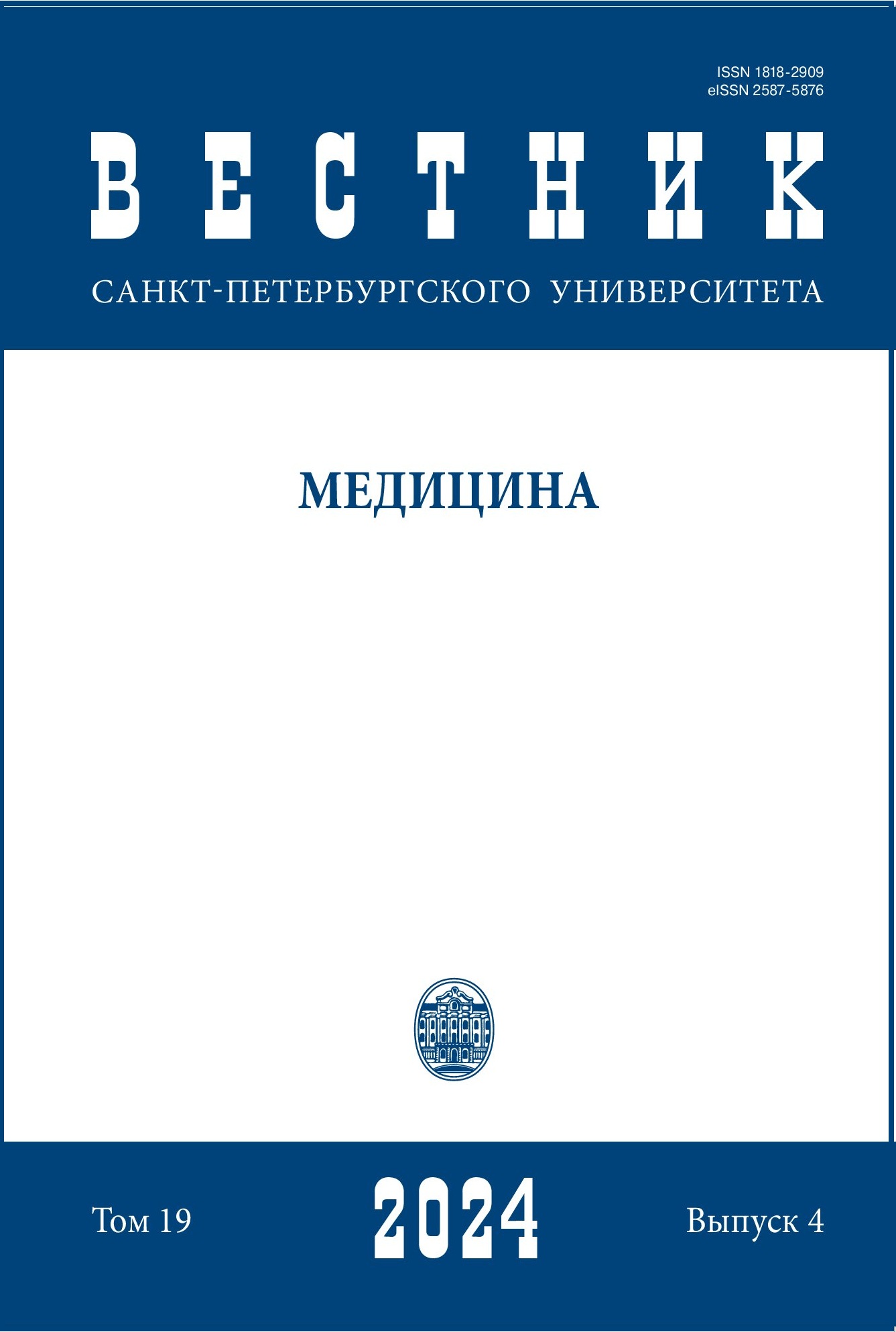Infectious complications in traumatology and orthopedics
DOI:
https://doi.org/10.21638/spbu11.2024.405Abstract
Infectious complications, as a result of osteosynthesis, are the result of microbes entering from the outside when the fracture area is opened, aseptic disorders during surgery, as well as when the wound heals with secondary tension. The degree of injury, the nature of osteosynthesis, surgery, drainage, and the absence of antibiotic prophylaxis contribute to necrosis of bone areas. Endogenous adhesion of microbes to the implant is also possible. The process can go beyond necrotized tissues with the development of a nasal infection, which is accompanied by the death of previously intact cellular structures and a clinically pronounced general reaction of the body. Microorganisms fast-ro are fixed on wound surfaces and pass into a biofilm form of growth, which cleans them from antibodies, host micro- and macrophages, as well as from antibiotics. This can be facilitated by the metal structure itself, which, by its presence, significantly violates local immunity. With external fixation, in case of violation of the technique of installing rods or conducting Kirchner spokes, bone and soft tissue burns can occur, followed by the development of chronic osteomyelitis. Removing them or re-conducting, prescribing
antibiotics and surgical treatment, as a rule, lead to the sanitation of the purulent focus. In osseous osteosynthesis, microorganisms spread along the metal and bone, forming a “dead bone sandwich.” We use the classification of infectious complications of injuries and injuries from
the Guidelines for Military Field Surgery (2013).
Keywords:
traumatology and orthopedics, bone fractures, infectious complications, implant- associated infection, surgical treatment, prevention
Downloads
References
References
Peterburgskogo gosudarstvennogo meditsinskogo universiteta imeni akademika I. P. Pavlova, 2019,vol. 26, no. 2, pp. 28–36. (In Russian)
Downloads
Published
How to Cite
Issue
Section
License
Articles of "Vestnik of Saint Petersburg University. Medicine" are open access distributed under the terms of the License Agreement with Saint Petersburg State University, which permits to the authors unrestricted distribution and self-archiving free of charge.




